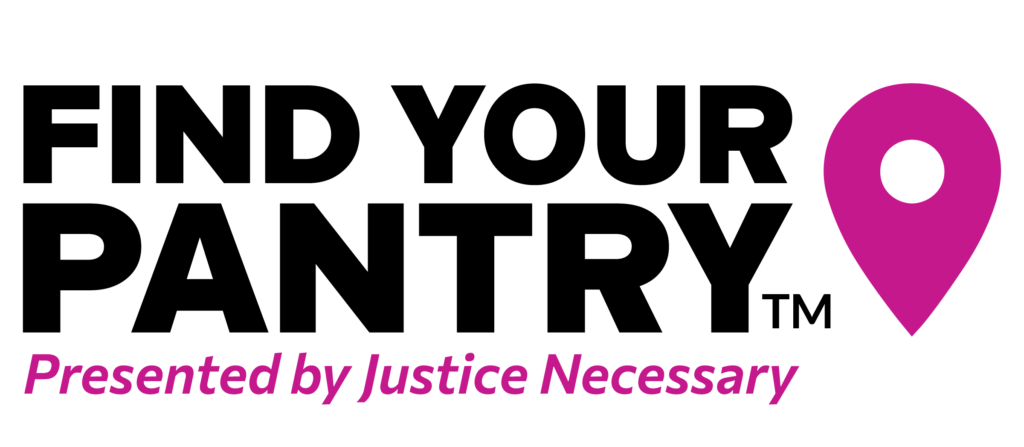2024 Study on Hygiene Poverty
Executive Summary
Hygiene poverty is a hidden crisis affecting thousands across Colorado. In 2024, Justice Necessary commissioned a groundbreaking study to uncover the real impact of limited access to hygiene products on individuals, families, and communities.
With insights from 2,505 Coloradans, our research exposes the widespread challenges people face in obtaining essential hygiene items—and the profound consequences for their mental health, physical well-being, and professional lives. The study reached all five key regions of Colorado, ensuring comprehensive geographic representation, and participant demographics were aligned with the most recent U.S. Census data, providing an accurate reflection of the state’s population.
These findings reveal significant barriers to accessing basic hygiene essentials and underscore the urgent need for awareness, expanded resources, and policy action.
Key Findings on Hygiene Poverty
0%
0%
Over 80% of Coloradans support government and private initiatives to alleviate hygiene poverty.
0%
Two-thirds of Coloradans have had to prioritize buying food over hygiene products in the past year, with many substituting improper hygiene products to meet their needs.
0%
One-third of Coloradans have missed or felt distracted at work due to a lack of hygiene products, and four in ten report struggling to get a job.
- Hygiene poverty causes emotional distress and negatively affects both adults’ and children’s physical and mental well-being.
- Deodorant, oral care, shampoo/conditioner, and soap/body wash are among the most needed products for work and school.
- Awareness of agencies providing hygiene products remains low and even among those who use support agencies, only one in ten reliably access both food and hygiene products.
In response, Justice Necessary created Find Your Pantry, a tool that connects individuals with nearby organizations offering essential hygiene products—including period supplies, diapers, toiletries, and cleaning items—by simply entering their zip code.
Find Your Pantry also serves as a resource hub, helping individuals locate hygiene essentials while allowing donors and volunteers to connect with local agencies in need of products, financial support, or assistance. This ensures contributions directly support community priorities and helps more people access the essentials they need to live with dignity.
Jump to Section:
For Media Inquiries:
Jump to Section:
For Media Inquiries:
Who Experiences Hygiene Poverty?
0%
Nearly half of Coloradans have faced hygiene poverty in the past year, with over one-third—36%—struggling with both food and hygiene poverty.
Types of products people struggled to purchase in the past year
46%
Food
40%
Household cleaning products
37%
Personal hygiene products
17%
Period products
9%
Diaper products
42%
None of the above
Colorado Regional Breakdown
- Eastern Plains = 6%
- Southern Colorado = 20%
- Northern Central Colorado = 14%
- Western Slope = 7%
- Denver & Metro Suburbs = 53%
Personal Hygiene Products
People who struggle to afford hygiene products struggle the most to afford shampoo and/or conditioner, toilet paper, and deodorant to care for their personal hygiene
Personal Hygiene Products Struggles to Purchase in the Past Year
Deodorant, oral care, and shampoo/conditioner are the most essential personal hygiene products for work or school.
Over one-third of those needing deodorant for work/school have gone without it.
| Personal Hygiene Product | Need Product to Go to Work or School (Total Respondents) | Has Gone Without Product to Work or School (Of Those Who Need Product) |
|---|---|---|
| Deodorant | 56% | 34% |
| Oral Care | 47% | 22% |
| Shampoo and/or Conditioner | 46% | 22% |
| Bar of Soap/Body Wash/Shampoo Body Wash | 45% | 20% |
| Brush and/or Comb and/or Hair pick | 37% | 14% |
| Toilet Paper | 36% | 11% |
| Razors | 31% | 17% |
| Lotion | 28% | 16% |
| Lip Balm | 23% | 12% |
| Period Products | 23% | 15% |
| Nail Clipper, nail file | 19% | 8% |
| Facial Tissue | 18% | 9% |
| Incontinence Products | 6% | 4% |
Home Cleaning Products
People who struggle to afford hygiene products most often struggle to purchase laundry detergent for their home cleaning needs.
Home Cleaning Products Struggled to Purchase in the Past Year
| Home Cleaning Product | Need Product to Go to Work or School (Total Respondents) | Has Gone Without Product to Work or School (Of Those Who Need Product) |
|---|---|---|
| Laundry Detergent | 37% | 27% |
| Cleaning Supplies | 21% | 13% |
| Dish Soap | 19% | 11% |
| Disinfectant Cleaner | 19% | 12% |
| Trash Bags | 18% | 11% |
| Can Openers | 6% | 3% |
Medical Supplies
First aid supplies are the hardest for respondents to purchase.
One third also struggle to purchase hand sanitizer, which is deemed the most essential for work or school.
Medical Supplies Struggled to Purchase in the Past Year
| Medical Supplies | Need Product to Go to Work or School (Total Respondents) | Has Gone Without Product to Work or School (Of Those Who Need Product) |
|---|---|---|
| Hand Sanitizers | 33% | 27% |
| First Aid Supplies | 25% | 22% |
| Insect Repellant | 8% | 6% |
| Reusable Forehead Thermometer | 6% | 5% |
Products for Children
To go to school or work, parents also need access to a range of products for their children.
1 in 5 need dental products for children to go to work or school.
“I do not and am not used to not having what I need to bathe and stay clean. Any funds I have I have spent on the children so that they do not feel any impact.”
Survey Respondent
Products for Children Struggled to Purchase in the Past Year
| Product for Children | Need Product to Go to Work or School (Total Respondents) | Has Gone Without Product to Work or School (Of Those Who Need Product) |
|---|---|---|
| Children's Toothpaste | 21% | 15% |
| Children's Toothbrushes | 19% | 13% |
| Baby Wipes | 15% | 12% |
| Diapers | 12% | 8% |
Awareness
Over half of Coloradans are aware that hygiene poverty affects people in their state, and more than four in ten know someone who struggles with it.
Are Aware of Hygiene Poverty in Colorado
0%
Know Someone Struggling to Afford Hygiene Products
0%
80% of Coloradans would like to see more public awareness, programs, and government assistance to support people who experience hygiene poverty.
Percentage of Coloradans who agree or strongly agree
The Impact of Hygiene Poverty
When people lack to access hygiene products, many feel embarrassed, stressed, uncomfortable, or frustrated.
“It makes me feel inadequate as a mother, but also as a productive member of society. I don’t feel confident enough in my own skin anymore. It’s embarrassing and degrading.”
Survey Respondent
Lack of adequate access to hygiene products impacts Coloradans' physical and mental well-being, with about eight in ten who are experiencing hygiene poverty reporting such impacts.
have experienced an impact on their physical well-being
0%
have experienced an impact on their mental well-being
0%
“I feel bad that I cannot provide the products my kids are use to using. I sometimes do feel worthless.”
Survey Respondent
A lack of access to hygiene products has a secondary effect on children, with over half of parents indicating that it has impacted their children’s physical and mental well-being.
have experienced an impact on their physical well-being
0%
53% of children that have experienced hygiene poverty have experienced an impact on their physical well-being
have experienced an impact on their mental well-being
0%
59% of children that have experienced hygiene poverty have experienced an impact on their mental well-being
60% of people who struggle with hygiene poverty have visited urgent or emergency medical care in the past 12 months compared to four in ten people who don’t struggle.
sought urgent or emergency care
0%
64% of people who experience hygiene poverty have sought urgent or emergency care in the past year, compared to 39% of people who don’t struggle
The lack of access to hygiene products also has an impact on personal and professional activities.
Over half of Coloradans have missed or felt uninterested in personal activities due to a lack of hygiene products, and over one third have missed or felt distracted at work.
A lack of access to hygiene products negatively impacts Coloradans’ ability to maintain and find a job.
Effect of a Lack of Hygiene Products (among those who experience hygiene poverty)
have experienced losing a job because of a lack of hygiene products
0%
said it affected their ability to get a job
0%
Prioritization and Substitutions
Over half of Coloradans have sacrificed buying food to afford hygiene products, and two thirds have had to de-prioritize hygiene products to purchase food.
have at some point sacrificed buying food to buy hygiene products
0%
have at some point sacrificed buying hygiene products to buy food
0%
Those who struggle with hygiene poverty or food insecurity most often sacrifice transportation to afford hygiene products, followed by food and utilities.
Parents are more likely than those without children to cut back on utilities, medicine, transportation, medical bills, and car payments just to afford hygiene products.
Substitution of hygiene products is common among people who experience hygiene poverty.
of people who struggle with hygiene poverty have substituted a hygiene product in the past year.
0%
“I have gotten napkins from restaurants to use for toilet paper because it is so expensive and I couldn’t afford to buy actual toilet paper. I have used old clothes as paper towels for cleaning. I have washed clothes with watered down stain spray when I haven’t been able to afford detergent.”
Survey Respondent
used substitutes for period products in the past year
0%
used period products longer than recommended in the past year
0%
Accessing Hygiene Products
Among those who struggle with hygiene poverty, just over half are aware of agencies that provide hygiene products, creating a barrier to acquiring the hygiene products they need.
are aware of agencies that provide hygiene products
0%
Agencies Visited for Hygiene Products
Not being aware of agencies and lack of transportation are key barriers to accessing hygiene products.
Among those who have received food and hygiene products from agencies, close to half often or always look to access both when visiting an agency, but less than one in ten can reliably do so.
often or always look to access both
0%
of those who have received food and hygiene products from an agency always get their needs fully met
0%
When looking to access food or hygiene products through an agency, most Coloradans turn to online search engines or family/friends to find information.
The most sought-after information about agencies includes their locations and eligibility requirements, followed by the types of products available.
Over one fourth of the people conducting research about agencies struggle to find the information that they need
of those who conduct research on agencies find it difficult to find the information they are looking for
0%
of those who conduct research on agencies find it easy to find the information they are looking for
0%

